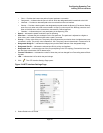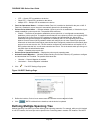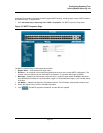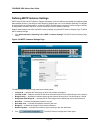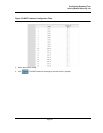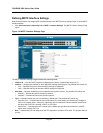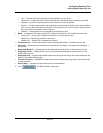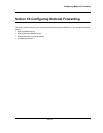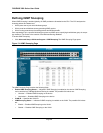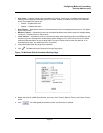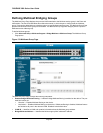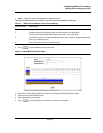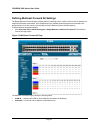
Configuring Spanning Tree
Defining Multiple Spanning Tree
Page 203
– Root — Provides the lowest cost path to forward packets to the root device.
– Designated — Indicates the port or LAG through which the designated device is attached to the LAN.
– Alternate — Provides an alternate path to the root device from the root interface.
– Backup — Provides a backup path to the designated port path toward the Spanning Tree leaves. Backup
ports occur only when two ports are connected in a loop by a point-to-point link or when a LAN has two or
more connections connected to a shared segment.
– Disabled — Indicates the port is not participating in the Spanning Tree.
• Mode — Indicates the STP mode by which STP is enabled on the device. The possible field values are:
– Classic STP — Classic STP is enabled on the device. This is the default value.
– Rapid STP — Rapid STP is enabled on the device.
– Multiple STP — Multiple STP is enabled on the device.
• Interface Priority — Defines the interface priority for the specified instance. The default value is 128.
• Path Cost — Indicates the port contribution to the Spanning Tree instance. The range should always be 1-
200,000,000.
• Designated Bridge ID — Displays the ID of the bridge that connects the link or shared LAN to the root.
• Designated Port ID — Displays the ID of the port on the designated bridge that connects the link or the
shared LAN to the root.
• Designated Cost — Indicates that the default path cost is assigned according to the method selected on the
Spanning Tree Global Settings page.
• Forward Transitions — Indicates the number of times the LAG State has changed from a Forwarding state
to a Blocking state.
• Remain Hops — Indicates the hops remaining to the next destination.
2. Click . The MSTP Interface Table opens.



